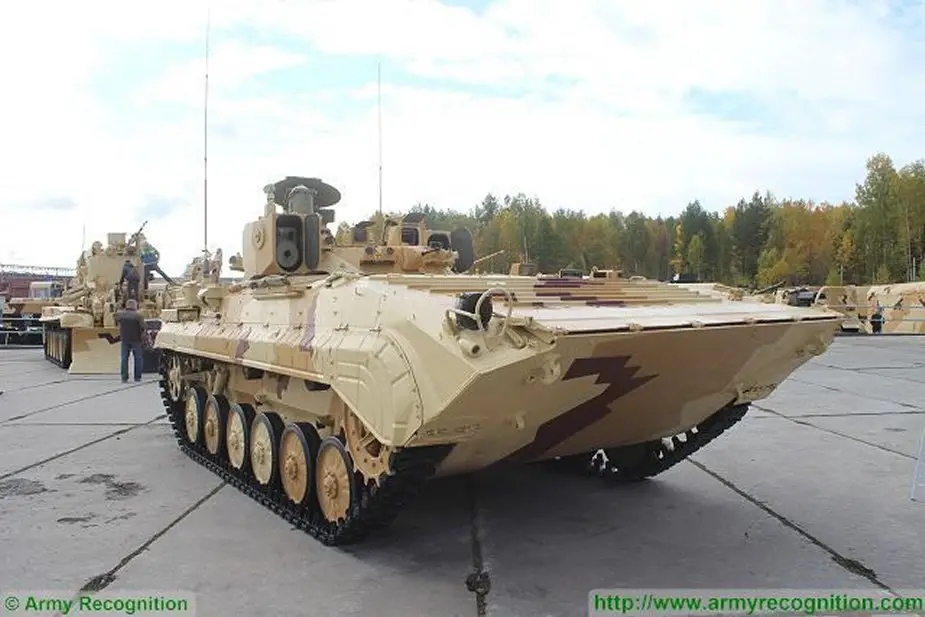Russia's armed forces are receiving the PRP-4A Argus artillery fire control vehicles, according to a military source. "The military is refitting its arsenal of artillery fire control vehicles, replacing legacy platforms by the PRP-4A Argus. The artillerymen of the Central Military District [TsVO] and Southern Military District [YuVO] are mastering the vehicles," the source said. The Argus allows recognizing of targets at 25 km via a thermal imager and laser rangefinder, he added.

PRP-4A Argus artillery reconnaissance and observation vehicle at RAE 2015, defense exhibition in Nizhny Tagil, Russia. (Picture source: Army Recognition)
The PRP-4A Argus artillery fire control vehicle is based on the BMP-1 infantry fighting vehicle. The platform has a combat weight of 13.8 t and a crew of four, including a commander, an operator, a topographical surveyor, and a driver. The Argus is fitted with a radar station, periscopic laser rangefinder, range-gated imaging system and range-finding thermal imager. The vehicle can detect a moving tank-type target and a single soldier at distances of up to 12 km and 7 km, respectively, using the radar. The periscopic laser rangefinder allows recognizing of up to three tank-type targets at a distance of up to 10 km. The PRP-4A can recognize large targets, including buildings, at a distance of 25 km.
The Argus also detects concealed targets. "The vehicle can detect a stationary tank-type target with non-running engine at a distance of no less than 2 km," the source said. The PRP-4A's circular error probability does not exceed 20 m with the use of the optical-electronic subsystems and 40 m with the use of the radar, he added. The vehicle has a combat readiness time of no more than 2 minutes.
The PRP-4A is armed with a Kalashnikov PKTM 7.62 mm medium machinegun and four smoke dischargers. The vehicle is powered by an UTD-20S1 diesel engine with a power output of 300 hp, which produces a maximum road speed of 65 km/h and a cruise range of up to 550 km. The platform’s organic protection has been reinforced with heat-absorbing screens, a camouflage net, and a smoke generator.
The PRP-4A Argus is believed to replace the PRP-4 Nard artillery fire control vehicle, which was adopted by the Soviet military in the early 1980s. Both platforms were designed by the Rubtsovsk Machine-Building Plant (RMZ), a subsidiary of the Rostec's Uralvagonzavod (UVZ) corporation.














